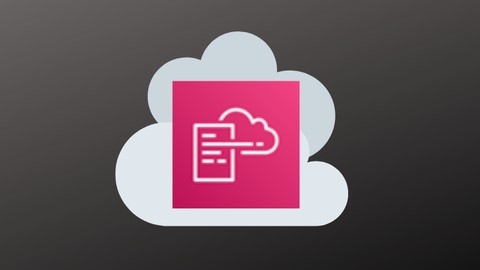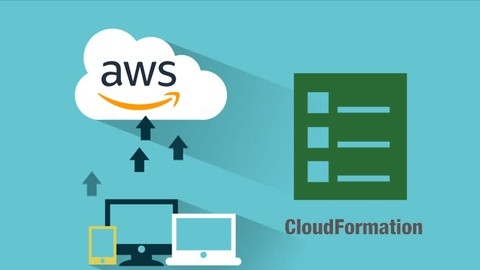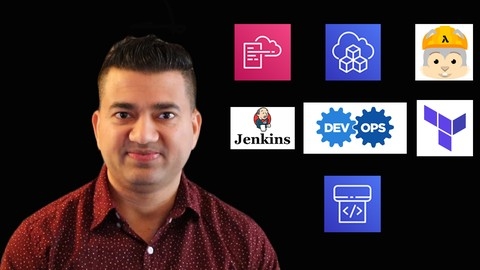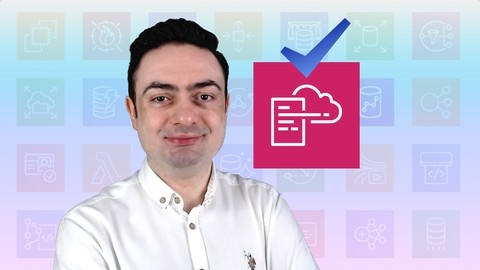AWS CloudFormation is a powerful service that allows you to define and manage your AWS resources using infrastructure as code (IaC).
By leveraging CloudFormation, you can automate the provisioning, updating, and deletion of your cloud infrastructure, ensuring consistency, repeatability, and efficiency.
Learning CloudFormation can significantly enhance your ability to deploy and manage your AWS resources, making your workflows more streamlined and your cloud infrastructure more resilient.
Finding the perfect AWS CloudFormation course on Udemy can be a daunting task, with so many options available.
You want a program that’s comprehensive, engaging, and taught by experts, but also fits your learning style and goals.
It’s easy to feel lost in the sea of choices.
For the best AWS CloudFormation course overall on Udemy, we highly recommend AWS CloudFormation Master Class v2 2024.
This course stands out with its in-depth coverage of both fundamental and advanced concepts, a hands-on approach, and a focus on real-world application.
You’ll learn everything from creating basic templates to building complex architectures, mastering best practices for deployment, and discovering advanced techniques like nested stacks, custom resources, and integration with CDK.
The instructor, a seasoned AWS expert, provides clear explanations and engaging content, making the learning process engaging and effective.
While this course is our top pick, we understand that everyone has different needs.
If you’re looking for a more beginner-friendly course, a specialization in a specific aspect of CloudFormation, or a program tailored to your specific use cases, keep reading.
We’ve curated a list of additional recommendations to help you find the perfect course for your journey.
AWS CloudFormation Master Class v2 [2024]
This comprehensive course equips you with the knowledge and skills to confidently automate your AWS resource management using CloudFormation.
You’ll begin by mastering the fundamentals, including creating and deploying templates using both YAML and JSON.
From there, you’ll delve into advanced concepts like parameters, resources, outputs, and conditions, building a solid foundation for creating complex cloud infrastructure.
The course doesn’t stop at the basics.
You’ll dive into essential features like AWS::CloudFormation::Init and EC2 User Data, gaining the ability to customize and manage your instances with precision.
You’ll learn to use CloudFormation Drift to monitor your stacks, ensuring they remain aligned with your templates, and discover the power of nested stacks to break down complex deployments into manageable units, creating scalable and efficient architectures.
The course also addresses cost management by exploring CloudFormation StackSets, a powerful tool for managing infrastructure at scale.
You’ll learn about a range of deployment options, including ChangeSets, Stack Policy, and Stack Termination Protection, allowing you to deploy, manage, and protect your resources with confidence.
Beyond the core concepts, you’ll explore best practices for continuous delivery using CodePipeline, enhancing your deployment workflows for efficiency and reliability.
You’ll also gain insights into advanced topics like custom resources, the CloudFormation Registry, and template modules, extending your capabilities for more complex and tailored solutions.
The course doesn’t shy away from modern tools and techniques.
You’ll explore SAM, CDK, and macros to streamline template creation, and learn about open-source projects and third-party tools that can further enhance your CloudFormation expertise.
AWS CloudFormation - Simplified | Hands On with YAML
You’ll start by gaining a strong understanding of the fundamentals, including how CloudFormation works and how to craft templates using YAML.
You’ll delve into key concepts like stacks, resources, parameters, mappings, conditions, outputs, and metadata, laying a solid foundation for your CloudFormation journey.
Beyond the basics, the course guides you through advanced topics that are essential for managing infrastructure as code.
You’ll explore Continuous Integration and Continuous Delivery (CI/CD) workflows, learning how to leverage AWS services like CodeCommit, CodeBuild, CodeDeploy, and CodePipeline to automate your deployments.
The course uses real-world examples and hands-on exercises to solidify your grasp of CloudFormation.
You’ll build stacks using resources like EC2 instances, security groups, and Elastic IPs, gaining valuable experience in managing your infrastructure in the cloud.
Additionally, the course covers crucial topics like CloudFormation Stack Policy, empowering you to control access and modifications to your stacks.
Mastering AWS CloudFormation Templates Using JSON
You’ll start by building a solid foundation in JSON notation, which is the language you’ll use to write your CloudFormation templates.
This focus on the fundamentals is crucial, as understanding JSON is key to efficiently creating and managing your stacks.
You’ll then dive into the core concepts of managing VPCs, subnets, and other essential network components.
The course explores the nuances of CloudFormation parameters and intrinsic functions, empowering you to customize your templates and create dynamic infrastructure.
You’ll also learn how to work with security groups, EC2 instances, and user data, gaining the skills to secure your resources and configure them to meet your specific needs.
Beyond the basics, the course covers advanced topics like load balancers, Route53, and auto-scaling groups.
You’ll discover how to create and manage these resources using CloudFormation, enabling you to build highly scalable and reliable infrastructure.
The inclusion of CloudFormation outputs and cross-stack access is a valuable addition, providing you with the tools to reuse templates and manage your resources more efficiently.
The course even ventures into the world of AWS Lambda.
You’ll learn how to create and deploy Lambda functions using CloudFormation, enabling you to build serverless applications that are easily scalable and cost-effective.
The course also covers the important topic of working with IAM roles to ensure the security of your Lambda functions.
This course is a great starting point for those seeking to master CloudFormation.
Its clear explanations, hands-on exercises, and focus on best practices equip you with the skills and knowledge to confidently build and manage your cloud infrastructure using this powerful tool.
Rocking AWS CloudFormation with DevOps, Interview Guide
You’ll learn how to define and manage your infrastructure as code, building a solid foundation in the fundamentals of CloudFormation.
The curriculum dives deep into template creation using JSON or YAML, exploring parameters, intrinsic functions, and other key elements.
You’ll then discover how to leverage CloudFormation to automate your deployments using popular DevOps tools like Jenkins, Terraform, and AWS CodePipeline.
This practical approach will equip you to build robust and efficient workflows.
Beyond the basics, you’ll delve into advanced topics like nested stacks, change sets, and custom resources.
You’ll learn to utilize dynamic references to access Secrets Manager and SSM within your CloudFormation templates.
The course also covers AWS SAM (Serverless Application Model), empowering you to rapidly deploy serverless applications using Lambda functions.
Finally, the course includes a valuable section on preparing for cloud interviews, equipping you with the knowledge and confidence to excel in those crucial conversations.
AWS CloudFormation Step by Step: Beginner to Intermediate
You’ll start by grasping the basics of CloudFormation and creating your first stack.
The course then dives into the structure of templates and how to write your first one using YAML.
You’ll learn about updating stacks with edited templates, linking resources with the “Ref” function, and understanding the importance of resource creation order and the “DependsOn” attribute.
One of the key strengths of this course is its thorough treatment of parameters.
You’ll learn to define parameters, set constraints, and assign default values.
You’ll also discover how to update stacks with new parameters and hide sensitive values.
The course explores specific parameter types, including number lists, string lists, and AWS-specific types, giving you a solid understanding of how to leverage these features effectively.
You’ll also become familiar with pseudo parameters and the “Fn::Sub” function, which allows for dynamic value substitution within your templates.
The course further deepens your knowledge with metadata and mappings, essential features for organizing and customizing your stacks.
You’ll learn how to group, order, and label parameters using the metadata section, and how to utilize mappings and the “Fn::FindInMap” function to manage complex relationships between resources.
Next, you’ll explore the power of conditions and outputs.
Conditions enable you to create resources based on specific parameter values, while outputs provide valuable information about your resources.
Finally, you’ll learn to manage your stacks using AWS CLI.
You’ll discover how to create, update, and delete stacks, as well as create and execute change sets.
The course teaches you how to use the “Deploy” command to streamline stack creation and updating, empowering you to efficiently manage your cloud infrastructure.
This course is ideal for those seeking a practical understanding of AWS CloudFormation.
It equips you with the skills to design, deploy, and manage your infrastructure declaratively, saving you time and effort in the long run.
AWS CloudFormation - Introduction Course
You’ll delve into the intricacies of template structure, learning about core components like properties and functions.
The course emphasizes practical application from the start, guiding you through building your first CloudFormation template, a valuable hands-on experience that solidifies your understanding of infrastructure as code.
Moving beyond the fundamentals, you’ll dive into real-world application by building a template for a WordPress website.
This exercise demonstrates how CloudFormation can be used to create complex and practical deployments.
The concept of nested templates is also explored, teaching you how to organize your infrastructure into manageable units for increased efficiency.
To visualize your projects, the course introduces AWS Cloud Designer, a powerful tool for visually designing and understanding your infrastructure.
You’ll also learn to interact with CloudFormation using the AWS CLI, providing you with a command-line interface for managing your deployments.
AWS CloudFormation-Beginner to Advanced (Hands-On with YAML)
You’ll start with the basics, delving into CloudFormation’s terminology, template anatomy, and essential resources like S3 buckets, EC2 instances, and VPCs.
But this isn’t just a theoretical exploration.
You’ll quickly dive into hands-on practice, learning to leverage parameters to customize your templates and metadata to fine-tune the behavior of your resources.
The course then shifts focus to the exciting world of serverless architectures, where you’ll build a real-world serverless banking application using AWS Lambda and API Gateway.
You’ll learn how to orchestrate these powerful tools, understanding the roles of each component and the benefits of this scalable approach.
Building web applications is also covered, showcasing how CloudFormation seamlessly integrates with technologies like Load Balancers, Auto Scaling Groups, and CloudWatch for comprehensive monitoring.
As you progress, you’ll tackle advanced topics like troubleshooting, deploying CloudFormation using AWS CI/CD pipelines, and managing infrastructure changes effectively with Change Sets.
You’ll gain a deep understanding of IAM Roles for secure access control and learn best practices for resource deletion.
You’ll be introduced to the power of mappings, conditions, and outputs, giving you the tools to manage and reuse your templates efficiently.
And, to bridge the gap between CloudFormation and modern development practices, you’ll explore the AWS Cloud Development Kit (CDK).
This powerful tool allows you to define your infrastructure as code using familiar languages like Python, TypeScript, or Java.
You’ll get hands-on experience building an API Gateway, Lambda function, and S3 bucket using CDK, making infrastructure management more intuitive and efficient.
This comprehensive program provides a strong foundation for anyone seeking to excel in AWS infrastructure management.
AWS CloudFormation Step by Step: Intermediate to Advanced
This course is a deep dive into the advanced features of AWS CloudFormation, designed for those who want to master the platform and go beyond the basics.
You’ll start by exploring the complexities of cross-stack references and nested stacks, learning how to create, update, and manage these intricate structures.
You’ll even discover how to use Bash scripts to automate your workflow.
Next, you’ll delve into the powerful world of helper scripts like cfn-init and cfn-signal.
These tools allow you to configure EC2 instances during deployment, ensuring everything is set up exactly as you need it.
You’ll also learn the intricacies of resource policy attributes, which empower you to precisely control how your resources are updated and what actions are allowed.
The course goes beyond just configuration, teaching you how to create and manage stack policies.
This enables you to define strict rules for your infrastructure, ensuring consistency and security.
You’ll also discover the power of custom resources, allowing you to extend CloudFormation’s capabilities using AWS Lambda functions.
Wait conditions are then introduced, ensuring that specific actions are completed before your deployment moves on, making your infrastructure even more reliable.
You’ll learn about stack drifts, those pesky manual changes that can disrupt your infrastructure.
The course teaches you how to import resources back into your stack and resolve any inconsistencies.
Finally, you’ll get a comprehensive introduction to AWS Serverless Application Model (SAM), simplifying the development and deployment of serverless applications.
You’ll learn how to use the SAM CLI to create, deploy, and customize your serverless applications.
You’ll be well-equipped to build complex, reliable, and highly customized infrastructure using the full power of CloudFormation.
Building Architectures with AWS CloudFormation
You’ll start with the fundamentals, learning how to launch and modify EC2 instances, and you’ll quickly move on to creating and using templates, the blueprints for your infrastructure.
You’ll even get to explore CloudFormation Designer, the visual design tool, to build complex architectures.
But this course isn’t just about theory.
You’ll gain hands-on experience as you build a web server, step-by-step, learning how to create and manage stacks, the building blocks of your CloudFormation deployments.
You’ll learn about stack sets, allowing you to deploy the same infrastructure across multiple accounts or regions.
Throughout the course, you’ll be tested with quizzes to reinforce your learning, making sure you truly understand the concepts.
The course also emphasizes best practices for managing your deployments, teaching you how to create change sets to ensure a smooth and controlled process.
And you’ll get a glimpse of the real-world power of CloudFormation with several sample architectures.
You’ll see how to use CloudFormation to build complex systems, like a load-balanced AutoScaling group or an RDS database with read replicas, inspiring you to create your own robust and scalable applications on AWS.
This course is a perfect blend of theory and practice, giving you the skills and confidence to master AWS CloudFormation and take your cloud infrastructure to the next level.
AWS CloudFormation Master Class With YAML and JSON [2022]
You’ll start with the basics, learning how to create simple templates and build your first EC2 instance.
The course quickly dives into more advanced concepts, covering parameters, intrinsic functions, and mappings to give you a strong foundation.
You’ll learn to control your infrastructure with conditions and metadata, and create outputs to track your stack’s status.
The hands-on exercises provide practical experience throughout, guiding you through the creation of nested stacks and change sets.
You’ll be introduced to the CloudFormation Designer tool, a visual interface that simplifies template creation.
The course effectively demonstrates how to incorporate existing resources into CloudFormation and addresses the crucial aspect of drift detection.
While the course covers essential topics, the section on helper scripts and stack policy to be particularly valuable.
It’s critical to understand how to manage your infrastructure securely and efficiently.
And the final lesson on custom resources opens the door to extending CloudFormation’s capabilities, allowing you to tailor it to your specific needs.
If you’re looking to streamline your deployments and gain control over your cloud resources, this course is an excellent starting point.

![AWS CloudFormation Master Class v2 [2024]](/img/best-aws-cloudformation-courses-udemy/1362052_AWSCloudFormationMasterClassv22024.jpg)








![AWS CloudFormation Master Class With YAML and JSON [2022]](/img/best-aws-cloudformation-courses-udemy/3611860_AWSCloudFormationMasterClassWithYAMLandJSON2022.jpg)